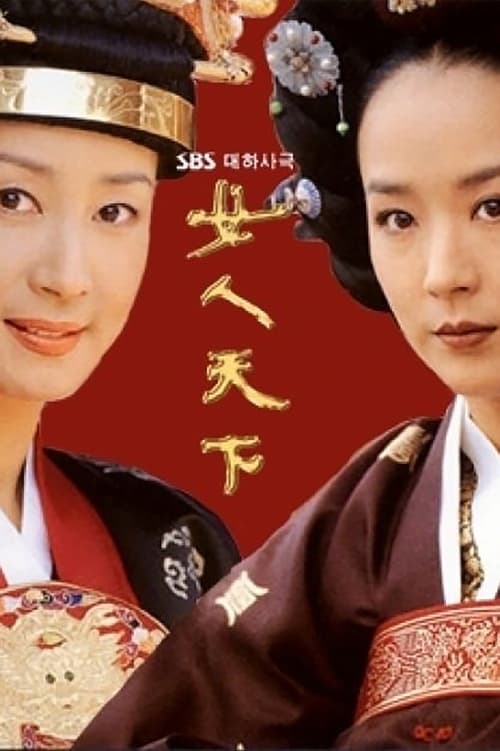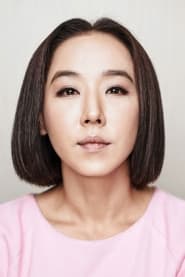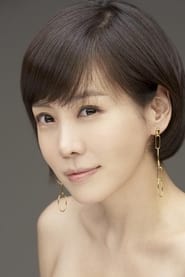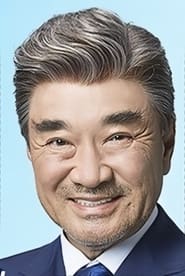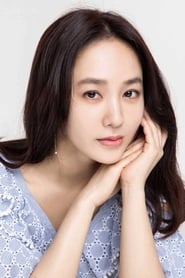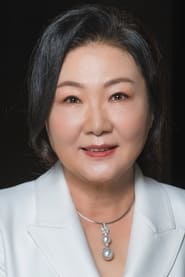
Ask Your Own Question
What is the plot?
In the year 2001, "Ladies of the Palace" begins with the introduction of the royal court during the Joseon Dynasty. The story centers around the lives of women in the palace, particularly focusing on the character of Lady Han, who is a noblewoman with a strong sense of justice and loyalty. She is introduced as a devoted wife to a high-ranking official, but her life takes a turn when she becomes embroiled in palace intrigues.
As the narrative unfolds, Lady Han witnesses the struggles of the women in the palace, including the concubines and the queen, who are all vying for power and favor from the king. The dynamics of jealousy and rivalry are established early on, showcasing the harsh realities of life within the palace walls. Lady Han's compassion leads her to form alliances with other women, including the queen, who is often threatened by the ambitions of the concubines.
A significant plot point occurs when Lady Han discovers a conspiracy against the queen orchestrated by one of the concubines, who seeks to elevate her own status. Lady Han grapples with the decision to intervene, knowing that doing so could put her own life at risk. Ultimately, she chooses to protect the queen, revealing the plot to her and helping to thwart the concubine's plans. This act of bravery earns Lady Han the queen's trust and solidifies her position as a key player in the palace.
As tensions rise, the king becomes increasingly aware of the power struggles among the women. He begins to question his own choices and the loyalty of those around him. Lady Han, sensing the king's turmoil, attempts to mediate between the factions, advocating for peace and unity among the women. Her efforts are met with mixed reactions, as some women view her as a threat to their ambitions.
The plot thickens when a scandal involving the king's illegitimate child comes to light. This revelation threatens to destabilize the entire court, and Lady Han finds herself at the center of the ensuing chaos. She must navigate the treacherous waters of court politics while trying to protect her family and maintain her integrity. The emotional stakes are high as Lady Han faces betrayal from those she once considered allies.
In a climactic confrontation, Lady Han confronts the main antagonist, a cunning concubine who has been manipulating events from the shadows. The confrontation is intense, filled with accusations and revelations. Lady Han's determination to expose the truth leads to a dramatic showdown, where she must use her wits and courage to outmaneuver her opponent. The scene is charged with tension as the two women engage in a battle of words and wills, each fighting for their place in the palace hierarchy.
As the dust settles, the king is forced to make a decision regarding the future of the concubines and the queen. He recognizes Lady Han's loyalty and bravery, which ultimately influences his judgment. In a surprising twist, he decides to elevate Lady Han's status, granting her a position of power within the court. This decision reshapes the dynamics of the palace, as Lady Han now has the authority to influence the lives of the other women.
The series concludes with Lady Han reflecting on her journey and the sacrifices she has made. She has navigated the complexities of palace life, forged meaningful relationships, and emerged as a leader among the women. The final scenes depict her standing strong in her new role, ready to face whatever challenges lie ahead, embodying the resilience and strength of the women of the palace.
What is the ending?
In the ending of "Ladies of the Palace," the story culminates in a series of emotional confrontations and resolutions among the main characters, leading to significant changes in their lives and relationships. The palace intrigues come to a head, and the characters must face the consequences of their actions, ultimately leading to a bittersweet conclusion.
As the final episodes unfold, the tension within the palace reaches its peak. The main character, Lady Choi, finds herself at a crossroads, grappling with her loyalty to the royal family and her personal desires. Meanwhile, Lady Han, who has been a rival throughout the series, faces her own reckoning as her ambitions clash with the realities of palace life.
In a climactic scene, Lady Choi confronts the king about the injustices she has witnessed and the sacrifices she has made. Her emotional plea resonates deeply, revealing her inner turmoil and the weight of her choices. The king, moved by her honesty, begins to reconsider his own decisions and the impact they have on those around him.
Simultaneously, Lady Han's schemes unravel as her manipulations are exposed. In a moment of vulnerability, she reflects on her past actions and the loneliness that her ambition has brought her. This leads to a poignant scene where she seeks forgiveness from those she has wronged, showcasing her growth and the complexity of her character.
As the series draws to a close, the characters begin to find their paths. Lady Choi, having gained the king's respect, is offered a position of influence, allowing her to advocate for the women of the palace. Lady Han, on the other hand, chooses to leave the palace, seeking a new life outside its confines, symbolizing her desire for freedom and redemption.
The final moments of the series depict a serene palace garden, where Lady Choi stands with the king, looking out over the horizon. Their shared understanding signifies a new beginning, not just for them but for the entire court. The camera pans out, capturing the beauty of the palace and the hope for a brighter future, leaving viewers with a sense of closure and reflection on the journey of the characters.
In summary, the ending of "Ladies of the Palace" encapsulates themes of loyalty, ambition, and personal growth, as each character confronts their past and steps into a new chapter of their lives.
Is there a post-credit scene?
"Ladies of the Palace," produced in 2001, does not feature a post-credit scene. The series concludes its narrative without any additional scenes after the credits roll. The story wraps up the arcs of its main characters, focusing on the intricate relationships and power dynamics within the royal court, leaving viewers with a sense of closure regarding the characters' fates. The final moments emphasize the emotional resolutions and the consequences of their choices throughout the series, but there are no additional scenes or teasers following the credits.
What are the main conflicts faced by the character of Lady Han?
Lady Han, a central character in 'Ladies of the Palace,' faces numerous conflicts throughout the series. Initially, she struggles with her position in the royal court, where she must navigate the treacherous waters of palace politics and rivalries. Her emotional turmoil is heightened by her desire to protect her family while also seeking her own happiness. As the series progresses, Lady Han's conflicts deepen as she confronts betrayal from those she trusts and must make difficult choices that test her loyalty and resolve.
How does the relationship between Lady Han and the Emperor evolve throughout the series?
The relationship between Lady Han and the Emperor is complex and evolves significantly over the course of 'Ladies of the Palace.' Initially, there is a sense of mutual respect and attraction, but as palace intrigues unfold, their relationship is tested by jealousy, misunderstandings, and the pressures of court life. Lady Han's internal struggle between her feelings for the Emperor and her duty to her family creates a poignant tension, leading to moments of both intimacy and conflict that shape their dynamic.
What role does Lady Choi play in the power struggles within the palace?
Lady Choi serves as a formidable antagonist in 'Ladies of the Palace,' embodying the cutthroat nature of court politics. Her character is driven by ambition and a desire for power, often resorting to manipulation and deceit to achieve her goals. Throughout the series, Lady Choi's machinations create significant obstacles for Lady Han and other characters, leading to intense confrontations and strategic alliances that highlight the precarious nature of their positions within the palace hierarchy.
How does the character of Prince Lee contribute to the overall narrative?
Prince Lee is a pivotal character in 'Ladies of the Palace,' representing both hope and conflict within the royal family. His character is marked by a sense of duty and a desire to prove himself worthy of the throne. As he navigates his relationships with Lady Han and the Emperor, Prince Lee's internal struggles with his identity and responsibilities add depth to the narrative. His actions often serve as a catalyst for key events, influencing the fates of those around him and driving the plot forward.
What significant events lead to the climax of the series involving Lady Han?
The climax of 'Ladies of the Palace' is marked by a series of significant events that revolve around Lady Han's ultimate choices and sacrifices. Key moments include her confrontation with Lady Choi, which escalates tensions within the court, and her decision to protect her loved ones at great personal cost. These events culminate in a dramatic showdown that forces Lady Han to confront her deepest fears and desires, ultimately leading to a resolution that impacts not only her fate but also the future of the palace itself.
Is this family friendly?
"Ladies of the Palace," produced in 2001, is a historical drama set in the royal court of the Joseon Dynasty in Korea. While the show is rich in cultural and historical context, it does contain some elements that may be considered objectionable or upsetting for children or sensitive viewers.
-
Political Intrigue and Betrayal: The series delves into the complexities of court politics, which often involves manipulation, betrayal, and power struggles. These themes can be intense and may be difficult for younger viewers to fully understand.
-
Violence and Conflict: There are scenes depicting physical confrontations, including sword fights and other forms of violence that are common in historical dramas. While not excessively graphic, the tension and stakes can be high.
-
Emotional Turmoil: Characters experience significant emotional distress, including loss, betrayal, and heartbreak. These moments can be heavy and may evoke strong feelings, which could be upsetting for some viewers.
-
Romantic Tensions: The show includes romantic subplots that may involve jealousy, unrequited love, and complicated relationships, which might not be suitable for younger audiences.
-
Cultural Practices: Some cultural practices depicted, such as arranged marriages and the treatment of women in the court, may raise questions or discomfort for modern viewers.
Overall, while "Ladies of the Palace" offers a rich narrative and historical insight, its themes and content may not be entirely suitable for children or those sensitive to intense emotional and dramatic situations. Viewer discretion is advised.

